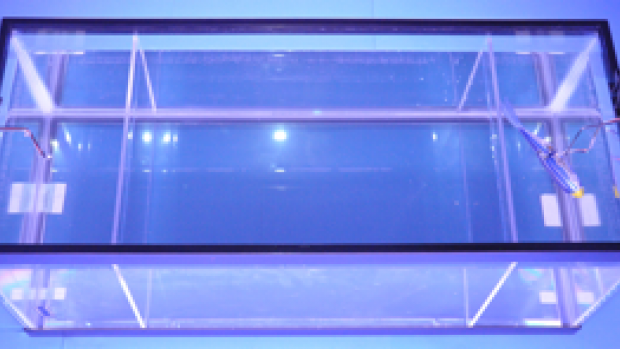The Fish of the Future

- Rebecca Kranz with Andrea Gwosdow, PhD for Whatayear January 1st, 2013
- Source: http://www.whatayear.org/01_13.php
Go to any aquarium, or even your local pet store, and you’ll quickly observe that many fish species travel in packs. Packs of fish—or schools, as they’re known—are composed of both leaders and followers, but scientists know very little about what characteristics make good leaders of a fish school. Recent experiments by Dr. Maurizio Porfiri shed new light on fish leadership skills, which could have profound implications for our knowledge of animal behavior as well as animal protection.
Dr. Porfiri, at the Polytechnic Institute of New York University (NYU-Poly), is an engineer by training. He began working with fish because of the tremendous amount of mechanical engineering found in fish anatomy, and because he was interested in the fluid dynamics involved in moving fish through water. His team began by developing a robotic fish that they then tested with live fish in a variety of ways, with support from the National Science Foundation.
In the first set of experiments, Dr. Porfiri used zebrafish, a common laboratory animal model. Zebrafish are a very social fresh water fish species that socially interact with a wide range of other fish. Zebrafish males and females are also known to be both attracted by females, so the researchers attempted to create a female-looking robot: a bit stockier, more curved, and with a larger belly. This provided hope that the mechanics used to control the fish could be a bit larger.
The researchers developed a basic robot model of the female zebrafish, a yellowish fish with a bright grey background and blue stripes. They then made a variety of robot models to discriminate the preference of zebrafish to color, size and shape. They changed their models in response to fish preferences.
How do you test fish preference?
To test the responsiveness of the zebrafish to a variety of models, the researchers placed the fish in a tank divided into three parts by transparent panels. The live fish were placed in the center and given a choice between two stimuli, one in each side compartment. The scientists then measured how much time the live fish spent at one side of the tank or the other, which served as an indicator of preference. Based on these experiments the researchers found the most attractive-looking robot for zebrafish.




